Tips and tricks | Estimated Read time – 9:13
How can you keep the momentum from your most recent event rolling into your next event?
Of course, you start by solidifying important dates, reconnecting with partners, sponsors, and vendors, mapping out your course or route, and securing permits and permissions.
But there’s a great opportunity to capitalize on between your events: building a meaningful and consistent connection with your participants.
Interacting with your participants in between events will help you create loyalty and boost anticipation for your next event. Every touch point with your participants can make a powerful impact.
With that in mind, we’ve put together five effective ways for you to connect with your participants between your events:
1. Run an Email Campaign
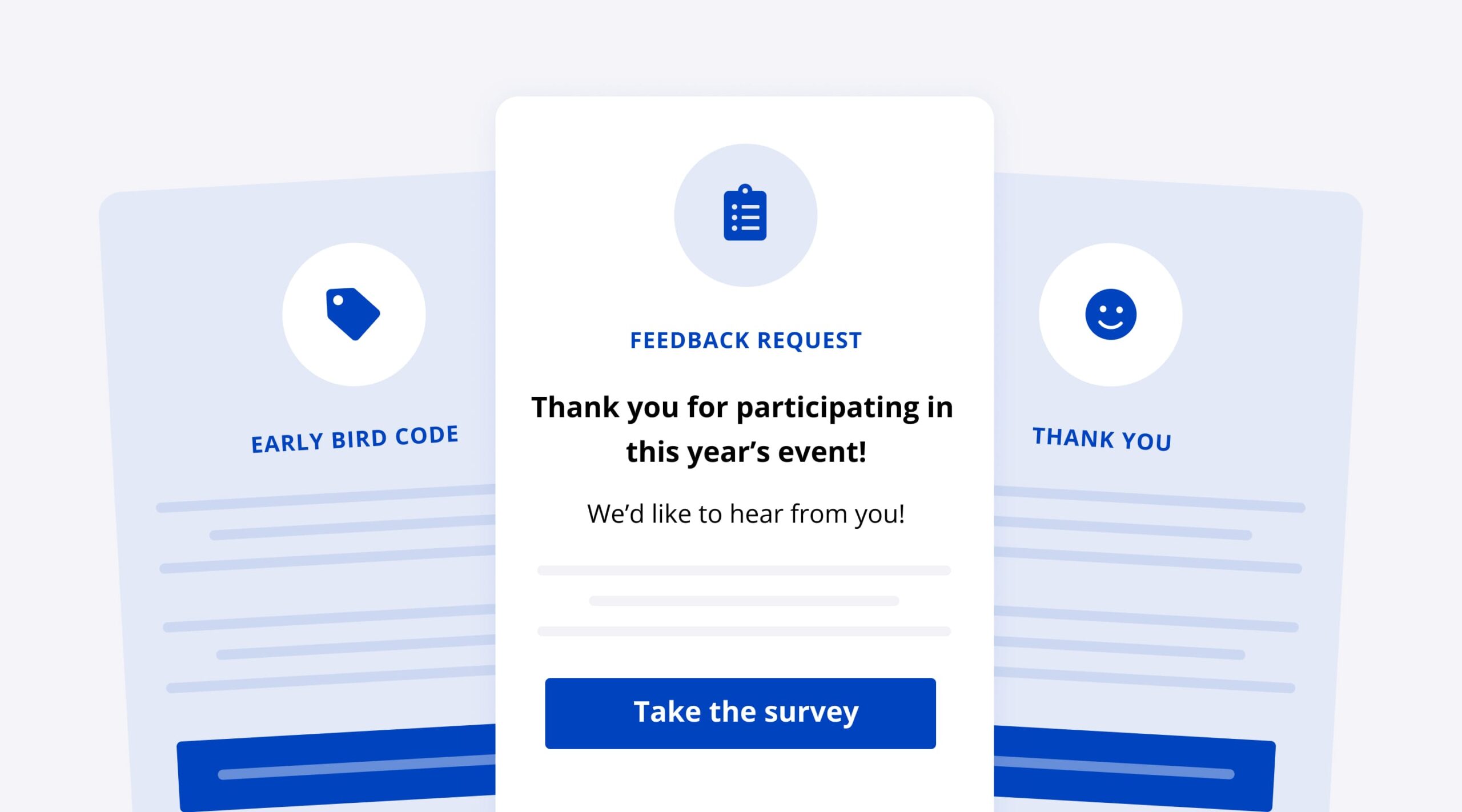
An email campaign is a simple yet impactful way to connect with participants in between events.
You’ve already built a dedicated email audience of past participants. Now is the perfect time to build on that loyalty by delivering meaningful content straight to their inbox.
Take the time to plan your email campaign. Decide how frequently you want to send emails to your participants, create a content calendar that lays out what type of content you’ll be providing and when, and don’t forget to follow email best practices.
Here are 5 content ideas for an email campaign you can run in between your events:
1. Post-Event Survey – A post-event survey will help you put on better events in the future while showing your participants you value their opinion and strive to deliver great experiences.
Check out our Industry Q&A for helpful advice on how to create your best post-event survey.
2. Say Thank You – A simple “Thank You” email can go a long way. A week or two after your event, tell participants how much you appreciate them. You can also share fundraising results, recognize event partners and sponsors, or tease details for your next event.
3. Off-Season Training – Help your participants maintain all the hard work they dedicated to your last event with an off-season training plan to keep that momentum going. Send out off-season training tips or point them to event partners like a run specialty store or a local gym.
4. Offer Early Registration – Reward the loyalty of past participants with the opportunity to sign up for your next event before anyone else. If possible, offer a discounted rate or free merchandise as incentive to register early.
5. Reveal Event Details – Build the hype for your next event by revealing details over a series of emails. Tease special guests or new sponsors, introduce an updated course with a video or interactive map, or unveil new merchandise with special pricing.
2. Build a Social Media Strategy
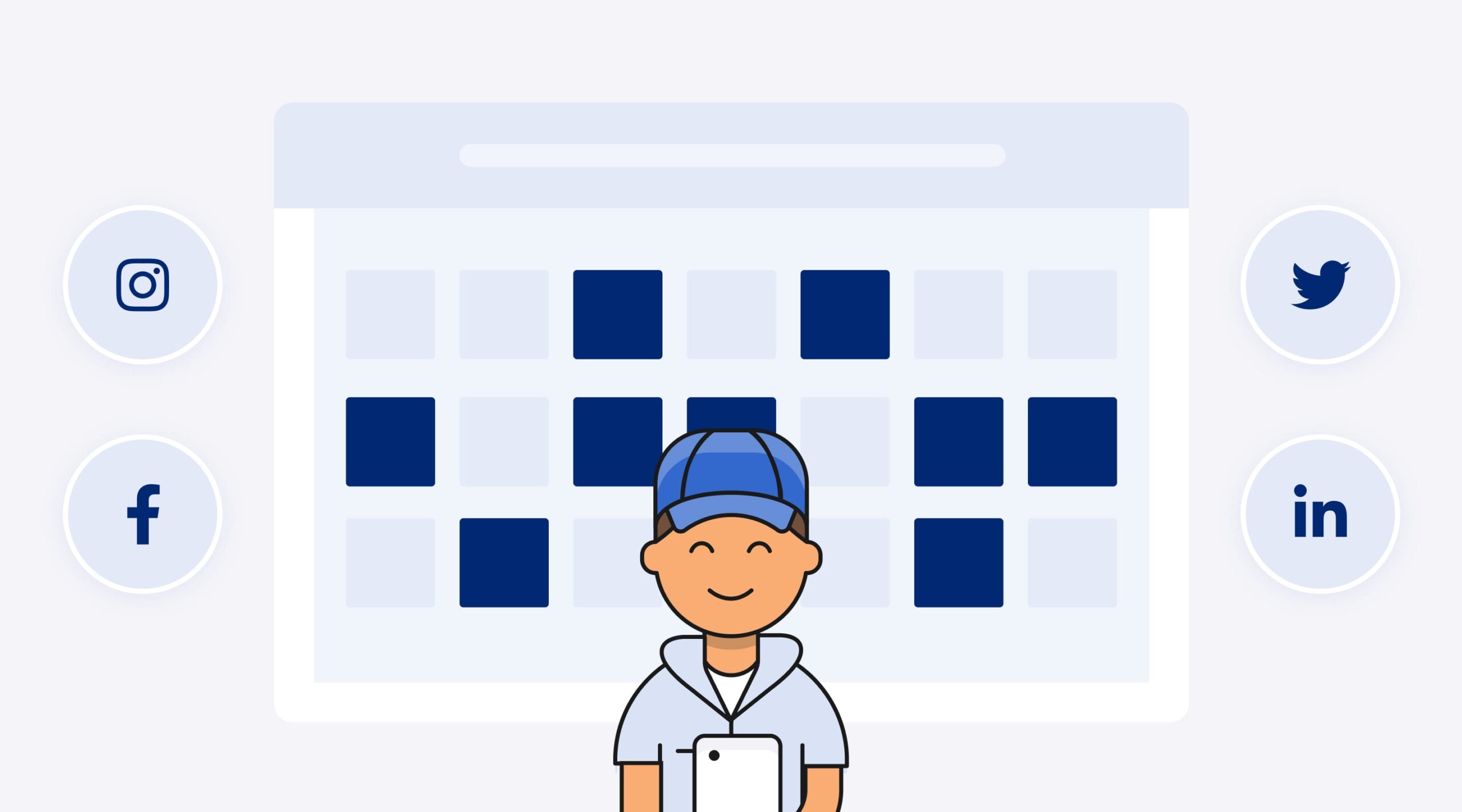
Staying active on your event’s social media accounts year-round is a must. It will keep past attendees engaged all year round and help you find new participants for your next events.
Planning is the key to an effective social media strategy that will connect with your participants and grow your following. So, make sure you build out a content calendar that will help you keep track of what and when you’re posting.
Here are three ways you can engage with participants on social media, even when you’re not running an event:
• Highlight the best of your event
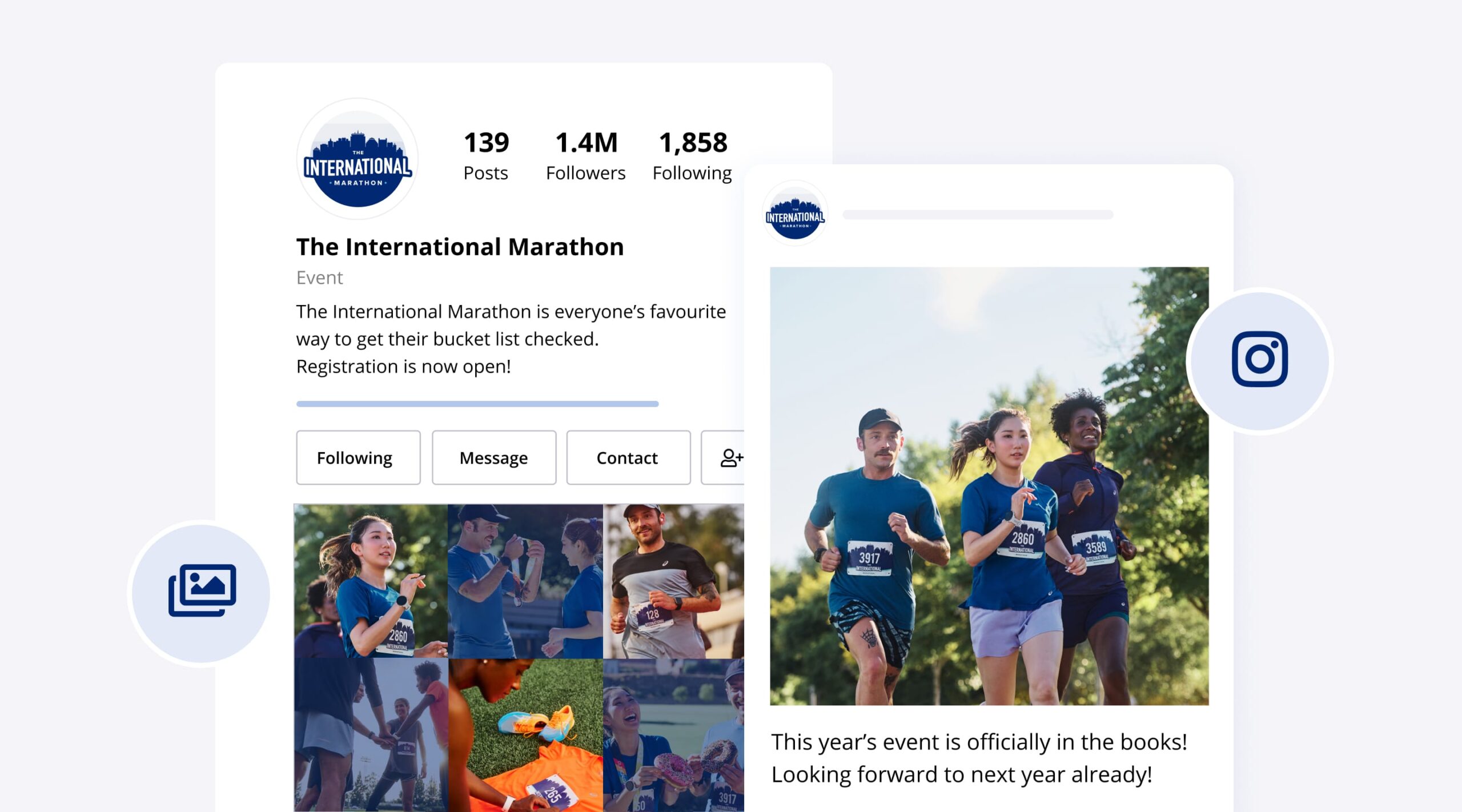
Help your past participants relive their experience all year long while showing potential participants everything they could experience next time around.
Find the best videos and photos from your latest event and post them on your social media channels: highlight your participants eager to get underway at the start line, or proudly crossing the finish line; show your partners and volunteers hard at work throughout your event; and shoutout the attendees who were there to cheer on your participants every step of the way.
Remember to also encourage your participants to share their favorite videos, photos, and memories on social media, then reshare those posts with your followers. Resharing posts creates a bond with your participants and shows potential registrants how much other people are enjoying your events.
If you post regularly and interact with other accounts, you’ll start to see your engagement (and your following) grow.
• Organize a contest to get participants moving

Organizing your best event is all about delivering a memorable experience. The same goes for social media contests. Make it fun and unique, and your followers will remember.
Putting on a social media scavenger hunt is a great place to start. Create a list of items related to your event, then challenge your followers to post a selfie with each item along with a contest hashtag. The first person to post selfies with each item on the list wins the contest and a prize of your choice.
Once the scavenger hunt is over and a winner has been crowned, you can collect the best selfies and share them on social media.
You could also host a photo or selfie contest, which is easy when you use your results page on Race Roster. All you have to do is allow your participants to upload their own photos to your gallery and the name of the participant who contributed the photo will be publicly displayed.
Once you’ve done that, you can use your social media channels to let your participants know you’ll be awarding a prize to whoever uploads the best photo or selfie to your event gallery. Then, to pick your winners, just reference the “contributed by” text in your gallery and select your favorites!
• Bonus Idea: Run an event giveaway to boost engagement

If you want to run a simpler social media contest, a giveaway is a quick and easy alternative that is guaranteed to drive engagement.
Pick a prize to give away—like free event merchandise or a discounted registration—and tell your followers how to enter in the caption. For example: follow your account, like this post, and tag a friend.
After a week, pick a winner at random and share the result on your social media accounts, congratulating the victor.
Pro tip
Read our social media strategies blog for tips on how you can connect with even more potential participants.
3. Put on a Virtual Event
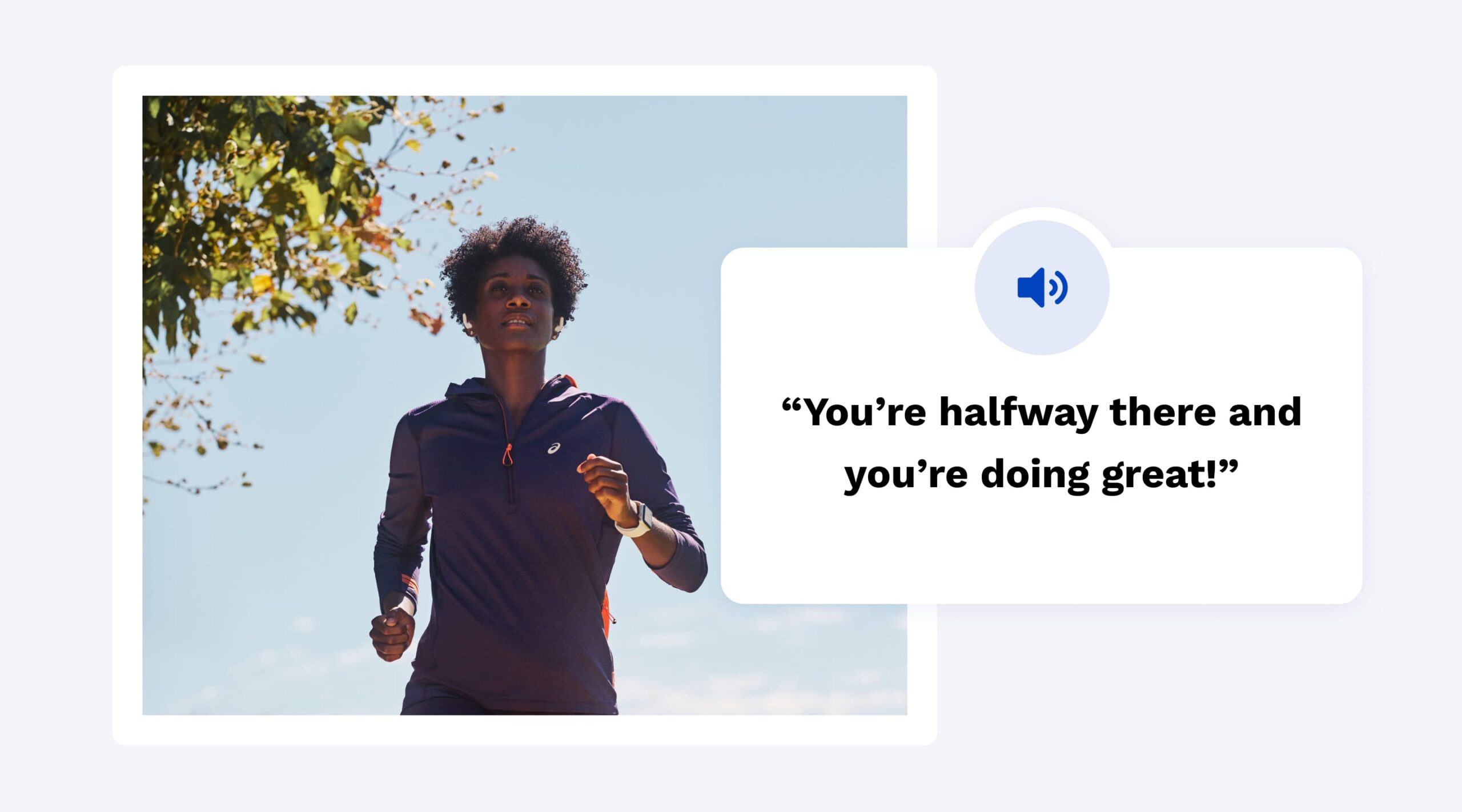
Your in-person event doesn’t have to be your only event. You can host a whole new event that is entirely virtual yet still delivers an unforgettable experience for participants.
Planning a virtual event requires less heavy lifting than organizing an in-person event while giving you a great opportunity to increase revenue and grow your brand. What’s more, you can reach a larger audience because participants can join in from anywhere.

Run Calgary’s “12K’s of Christmas” is a great example of the success event organizers can find with a virtual event. Every year, to kick off the holiday season, participants of this virtual race walk or run 12 total kilometers during the first 12 days of December in support of Seniors Secret Service.
In 2020, Run Calgary even utilized Race Roster’s audio cues feature in conjunction with the ASICS Runkeeper™ app to play creative custom Christmas cues for participants. It was a big hit.At each kilometer milestone, participants heard “The 12K’s of Christmas” to the tune of a holiday classic, “The 12 Days of Christmas”! At the 12-kilometer mark, for example, the audio cue sang: “On the 12th K of Christmas, Run Calgary gave to me: 12 runners running…”
The “12K’s of Christmas” is one of Run Calgary’s most popular virtual events and shows how event organizers can get creative during their off-season to connect with participants and reach a larger audience of potential registrants.

Did you know?
Event organizers using the Race Roster platform can sync their existing events with virtual event options in the Runkeeper app with no extra fees. Learn how to connect your event with the ASICS Runkeeper app.
4. Organize Virtual Challenges
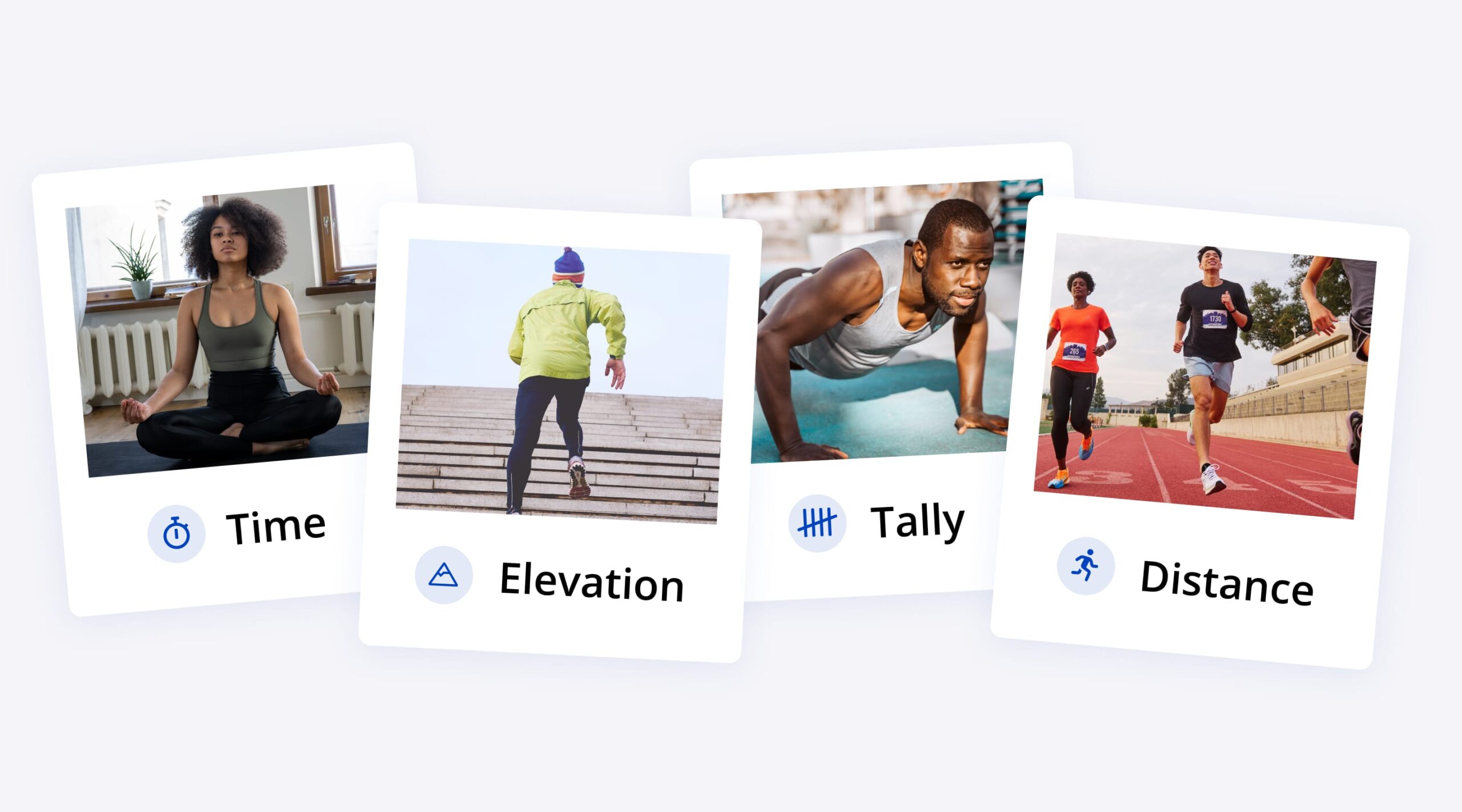
Virtual challenges are like virtual events, except the activities are generally more varied and the specified time periods are typically longer.
For example, challenges can include exercising for 30 minutes a day for 30 straight days or running/walking 60 kilometers over the course of 60 days. Challenges can also have an open goal, meaning participants are encouraged to do as much of one activity as they can over a certain period of time.
The length of your challenges is entirely up to you (maximum length is 18 months). You could put on different virtual challenges monthly, organize one challenge that spans the entire period between your events, or organize challenges at a frequency that works best for you.
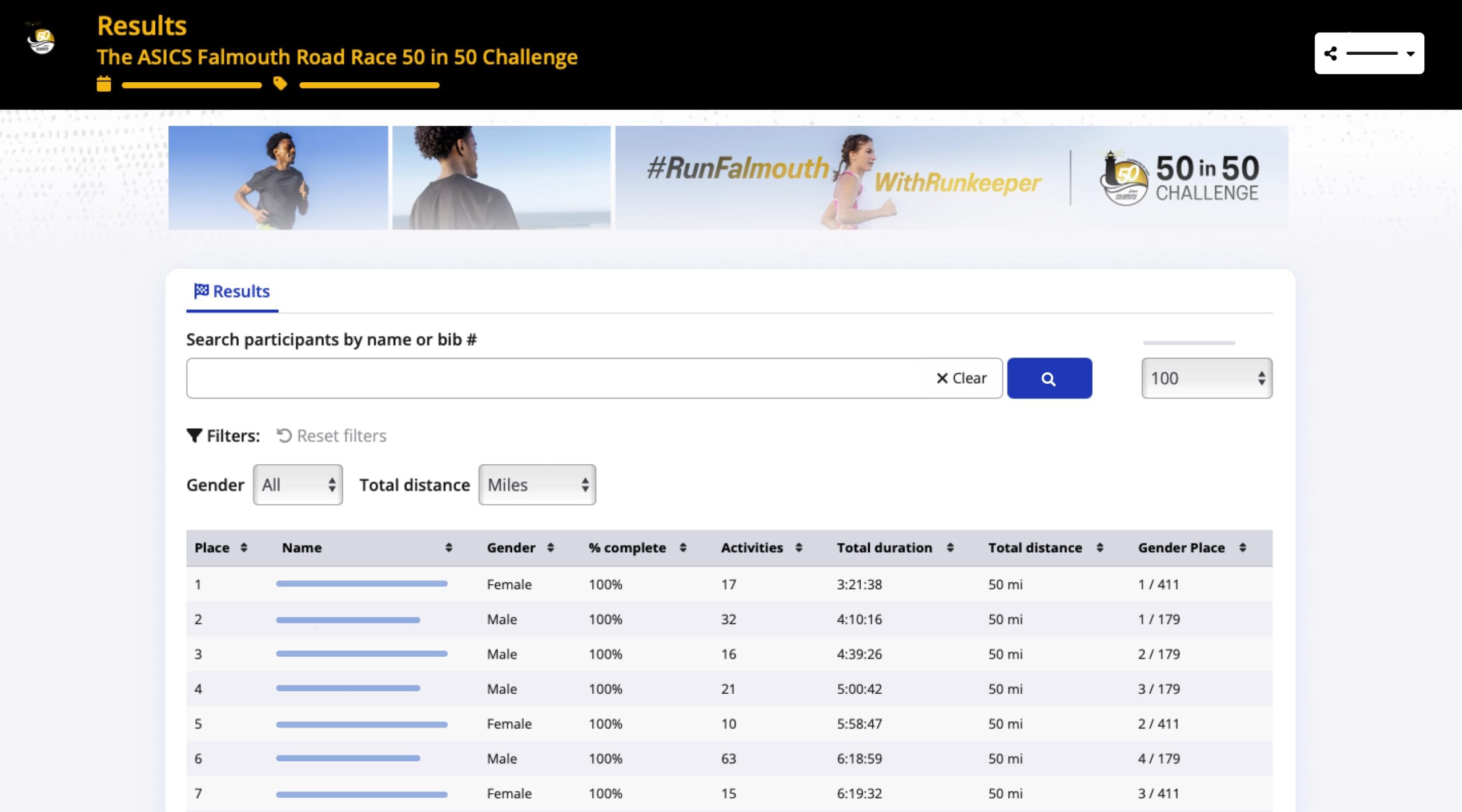
Virtual challenges help keep your participants engaged year-round, can be used as a tool to help with training, and create friendly competition that will get people talking about you and your event.With Race Roster’s virtual challenge feature, you can run four different types of challenges—cumulative time, tally, elevation and distance—and customize your challenge to fit with any theme or distance.
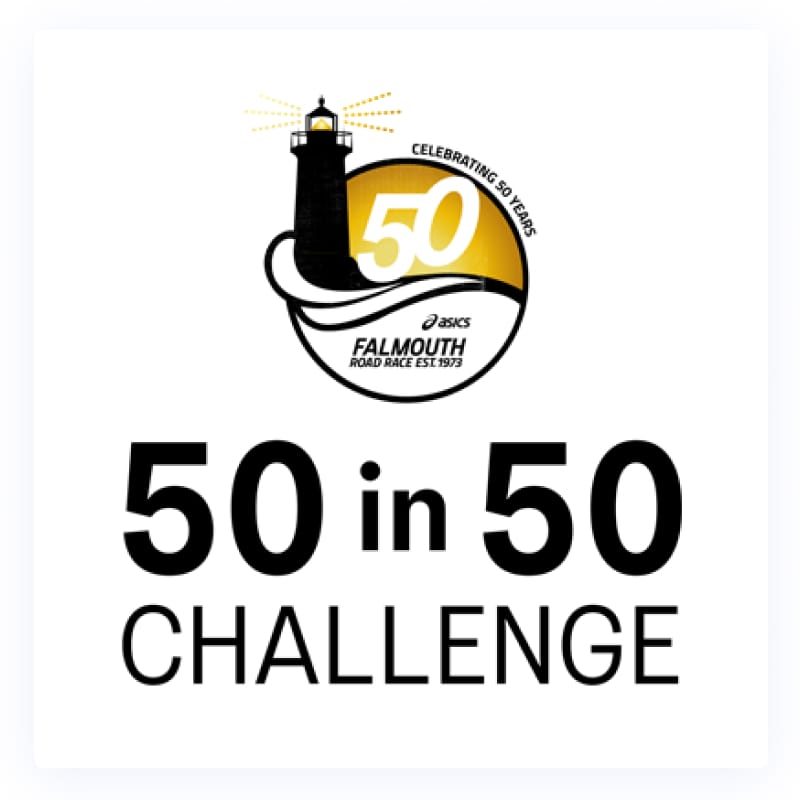
The ASICS Falmouth Road Race’s 50 in 50 Challenge is a great example of how virtual challenges can create a sense of community and competition amongst participants. It challenged participants to move 50 miles in 50 days and was scored based on time, not miles ran, meaning athletes of all levels could take part.
5. Create a Participant Content Hub
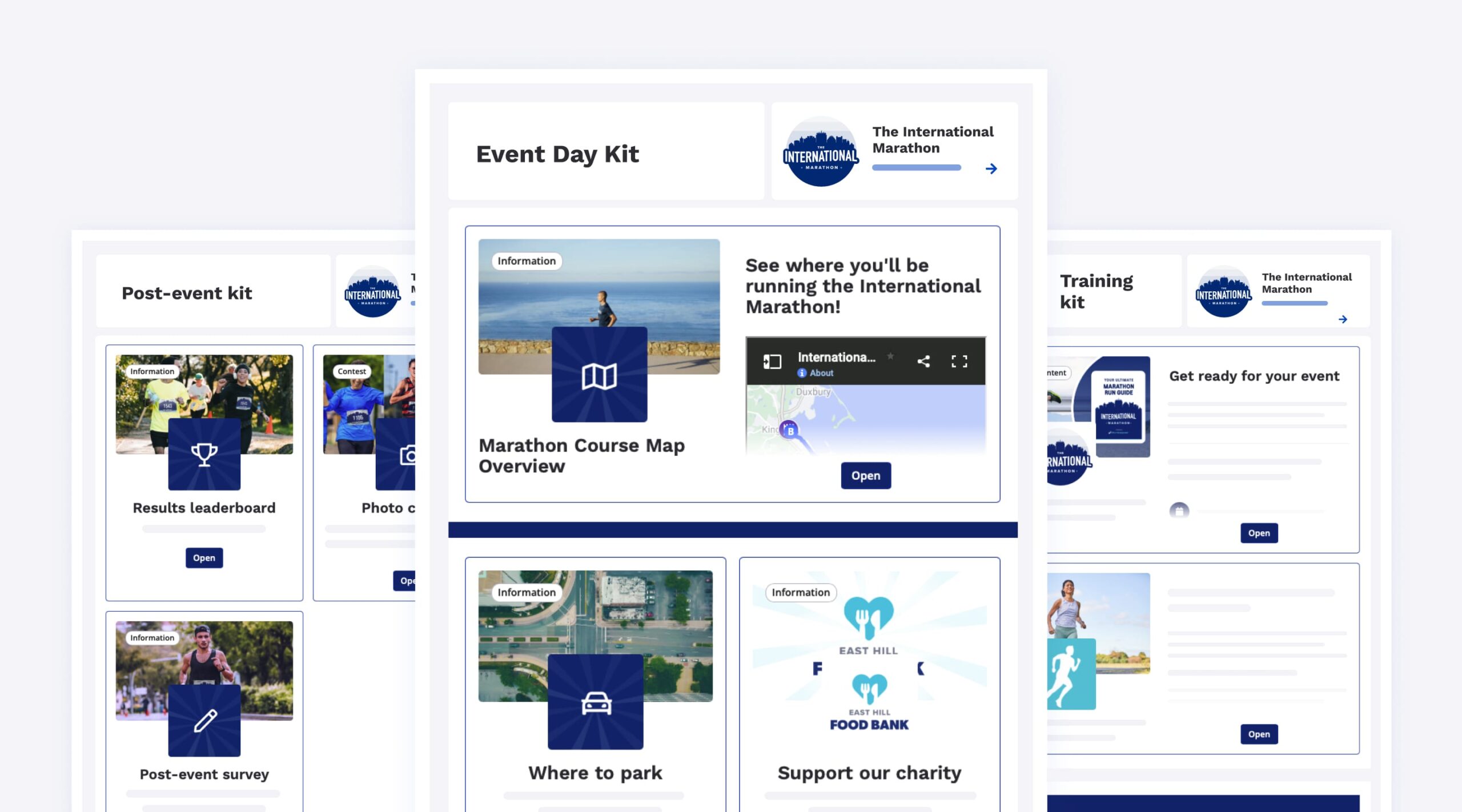
Build a one-stop-shop content hub where past participants and potential registrants can visit between your events to learn everything about your next event, take part in all your virtual activities, and connect with the growing community you’re building.
You can use your content hub to promote your virtual events and challenges, recommend off-season training plans, reveal new and exciting event details, build and share music playlists, offer discounts on early registration or merchandise, and introduce event partners and sponsors. The possibilities are almost endless.
How can you build your participant content hub? With our Digital Engagement Kit feature.
A Digital Engagement Kit (or DEK) is a custom event page available free to event organizers who are registered with Race Roster. Using a collection of customizable “cards,” event organizers can create a dynamic page that delivers valuable content to their participants—even during their event’s off-season.
With this feature, you can create a public DEK specifically designed to engage with participants in between events. Anyone with the link will be able to access your DEK, which means you can share it through an email campaign or on social media to connect with more potential participants, connect with them in meaningful ways, and grow your event.
Pro tip
Check out our recent blog about the Digital Engagement Kit to learn more ways you can use it to boost your events.
An important part of retention is the experience organizers can deliver to participants year-round. Connecting with your participants between events is the best way to build a strong foundation for loyalty. If you take the time to create a handful of touch points during your off-season to stay top of mind, you’ll be rewarded with strong registration and consistent growth.

What’s new at Race Roster?
Visit our what’s new page for the most noteworthy Race Roster updates!